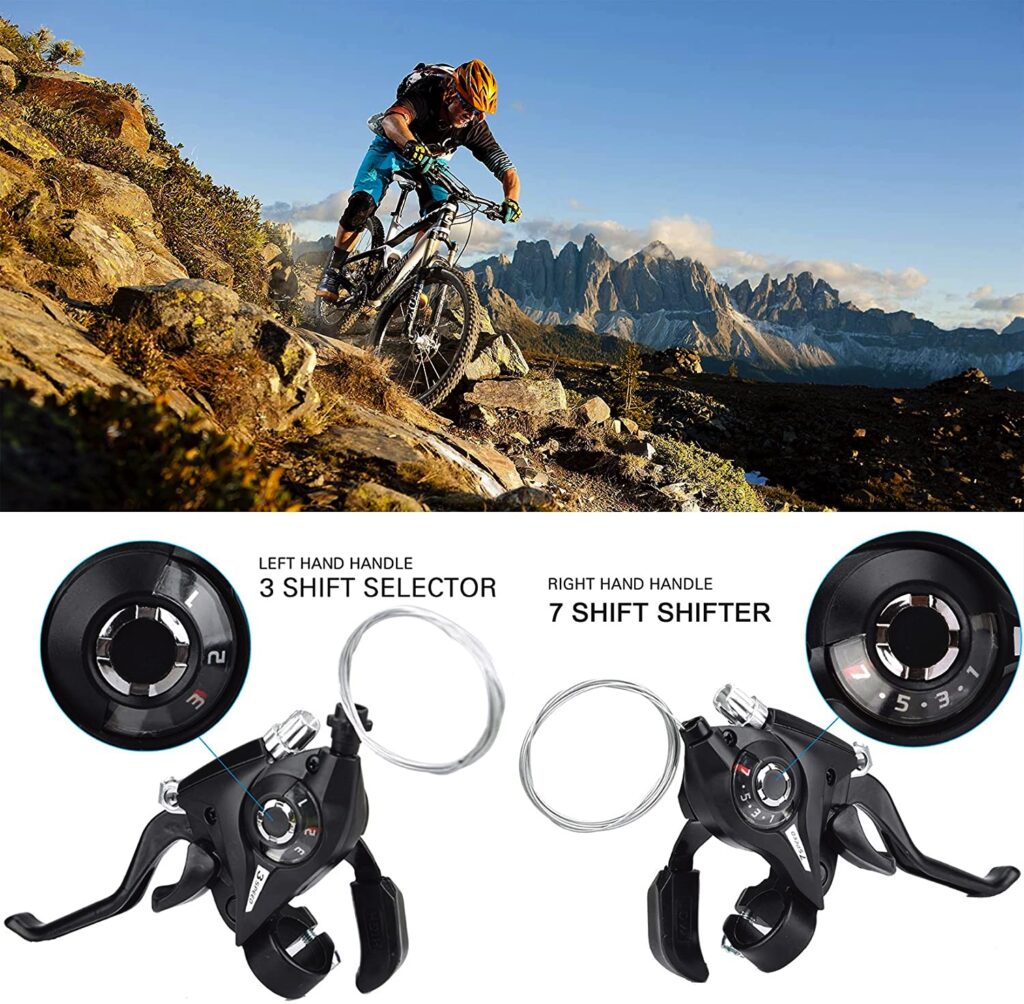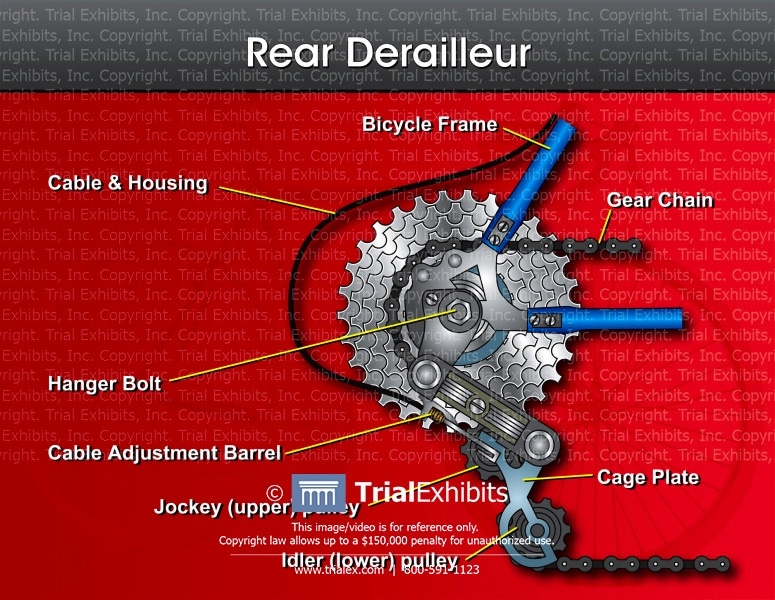How to Remove Mountain Bike Grip Shifters – Step by Step
Grip shifters are the mechanisms on the handlebars that allow the rider to change gears on a mountain bike so that they can properly navigate rough terrain and maintain safe control of their bike. In this article, we discuss how to remove mountain bike grip shifters and replace them.
To remove mountain bike grip shifters, first, detach the cable from the derailleur, then remove the handlebar grips. Next, loosen the Allen screw, and finally slide the grip shifter off the handlebars.
A good grip shifter will ensure smooth transitions between gears with minimal strain on the rider’s hands, wrists, and arms. If a rider experiences difficulty changing gears then it would be a good idea to change the shifters to a type that fits with their riding style and posture, as well as the type of terrain.
You can also check out our article that discusses where to hold mountain bike grips to maintain proper posture to avoid sustaining injuries. Also, if you've ever wondered what the difference is between a mountain bike trigger shifter and a grip shifter, you will definitely want to read that related article.

These are the steps to remove a grip shifter from your handlebar:
Step 1. Detach the Cable from the Derailleur
First, shift your bike into the lowest gear and turn the barrel adjuster all the way in. Then loosen the clamp on the derailleur, cut the cap off the cable end using a pair of pliers like these, and remove the cable from the derailleur.
Step 2. Remove the Handlebar Grip
Remove the handlebar grip by carefully sliding a thin flat screwdriver under the edge of the grip, lift the edge up slightly, and spray some of this lubricant spray into the gap. Then remove the screwdriver and twist and pull the grip off the bar. Our step-by-step article about removing mountain bike grips from handlebars has several tips to make removing the tight grips a bit easier.
Step 3. Unscrew the Allen Screw on the Grip Shifter
Locate the small screw on the underside of the grip shifter and loosen it until the shifter is released on the bar.
Step 4. Remove the Grip Shifter
Slide the grip shifter off the handlebar and pull the cable that is still attached to the shifter through the cable housing that runs along the bike frame.
Once you have it removed, you may want to learn how to fix mountain bike grip shifters. If so, please read our related article. Additionally, our guide to common mountain bike grip upgrades will help you choose the right one.
How to Adjust Twist Grip Shifters
Some mountain bike riders prefer twist shifters because the gear change is performed seamlessly by rotating the grip to select the desired gear—this helps the rider quickly change gears and maintain their momentum over tricky terrain. Twist shifters are a favorite among beginner and intermediate riders because they are simple to install, and easy to use when riding.
Generally, a twist shifter is calibrated to factory settings, but adjustments can be made to the derailleur or cables to improve the transition when shifting up or down, as well as to keep the selected gear engaged.
To adjust twist grip shifters, adjust the tension on the cable that feeds into the twist grip shifter. Clean the cables and twist shifters regularly to prevent a build-up of grease and grime, which could stop the twist shifter from keeping the selected gear engaged.
How to Adjust Twist Grip Shifters to Improve Gear Selection
Grip shifters can accumulate gunk inside the casing that is caused by a combination of dirt from riding and lubricant that is applied to the bike. Regularly cleaning the twist shifter will ensure better gear shifting. If your shifter is slipping out of the selected gear, which is causing the chain to skip and disengage, your cable has probably lost tension due to gradual stretching over time. This video tutorial from Park Tool will help you tighten up your shifter cables.
How to Adjust Twist Grip Shifters to Increase Speed
Adjusting your shifter cable tension will make shifting smoother and easier, which will increase your riding speed. New shifters are often loaded with grease during the manufacturing process, which can increase friction and make shifting more difficult. Remember to sporadically open up your gear shifter and clean out some of the excess grease, and also clean your cables which will help assist with smoother gear changing.

Related Articles:
Benefits of clipless pedals on a mountain bike
How to install mountain bike pedal straps and toe clips
How to Replace Grip Shifters with Trigger Shifters
Many riders prefer to change their grip shifters to trigger shifters to give them an edge when it comes to speed and control during a ride. This requires you to first remove mountain bike grip shifters and then replace them with trigger shifters.
To replace a grip shifter with a trigger shifter first, make sure that a trigger shifter is compatible with the existing derailleur. Next, disconnect the cables from the derailleur, remove the handlebar grip, unscrew the Allen screw on the grip shifter, and remove the grip shifter. Then, install the new trigger shifter, reattach the handlebar grips, run the cables through the cable housing, and reattach the cables to the derailleur.
Trigger shifters allow the rider to change gears quickly without changing their hand position when riding. The shifter is easily triggered by the index finger when gearing down or the thumb when gearing up. This ensures the rider maintains complete control of the bike because the shift is rapid and smooth. Our article about choosing mountain bike shifters is a great resource for learning about the various shifters that are available.
Step 1. Disconnect the Cable from the Derailleur
Remove the shifting cable that runs through the derailleur by first cutting the end cap off the cable with pliers, and then loosening the barrel clamp to slide the cable out of the derailleur.
Step 2. Remove the Handlebar Grip
Find the gap between the grip and the shifter and maneuver a thin flat screwdriver under the lip of the grip, taking care not to damage the rubber ring on the shifter or scratch the handlebars. Spray some rubbing alcohol under the grip, then remove the screwdriver and twist and pull the handlebar grip off.
Step 3. Unscrew the Allen Screw on the Grip Shifter
Locate the small Allen screw at the bottom of the grip shifter, and using an Allen key turn the screw anti-clockwise to loosen it.
Step 4. Remove the Grip Shifter
Once the screw is loose, slide the grip shifter off the handlebar. Pull the attached cable through the cable housing on the bike or cut the cable and pull it out of the cable housing.
Step 5. Install the New Trigger Shifter
Check to see that the twist shifter you have chosen is compatible with the derailleur. These Shimano trigger shifters are compatible with this Shimano derailleur. Insert the cable into the cable clamp on the shifter and tighten the clamp. Next, adjust the angle to a comfortable position so that your wrist is not over nor under-extending to operate the shifter when riding. Adjusting the angle of the shifter will help prevent wrist injuries that often plague mountain bike riders, which are discussed in this article from Springer.
Step 6. Re-attach the Handlebar Grip
Replace your handlebar grip once the shifter is secured. If the grips are worn or old it may be a good idea to replace your handlebar grips while you are already busy installing the new trigger shifter. Our article that explains how to choose mountain bike handlebar grip sizes could help you in choosing the right ones. We also suggest ways for choosing mountain bike gloves with grip if your handlebar grips don’t provide enough traction.
Step 7. Run the Cable Through the Cable Housing
When replacing the grip shifters, it's worth your while to also replace the cables because they naturally stretch over time, which can affect gear shifting when riding. You will need a length of new cable like this as well as a cable crimper like this and these cable caps.
Step 8. Attach the Cable to the Derailleur
Attach the cable to the derailleur by inserting it into the cable adjustment barrel and then tightening the clamp. Finally, place a cable end cap onto the exposed end of the cable that extends out the barrel, and crimp the cap tightly over the end.

Summary of Tools Needed to Replace Grip Shifters
| Tool/Item | Amazon Product | Price |
| Grip Shifter | Meghna Bike Shift Lever | ~$15 |
| Allen Tool | Rexbeti Hex Key Allen Wrench Set | ~$15 |
| Long-Nose Pliers | Plier Set, 4-Piece | ~$20 |
| MTB Lubricant | Finish Line Wet Bike Lubricant | ~$20 |
| Replacement Cables with Crimping Caps | Bicycle Derailleur Shifter Cables | ~$10 |
| Twist Shifters | Ventura Bicycle Twist Shifter | ~$15 |
| Trigger Shifters | Mountain Bike Shifter Bike Gear Shift Lever, 7 Speed Bicycle Trigger Shift | ~$20 |
| Handle Grips | Double Lock-On Mountain Bike Grips | ~$20 |
